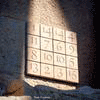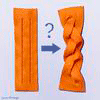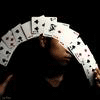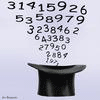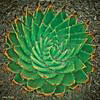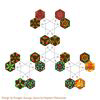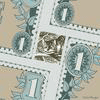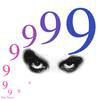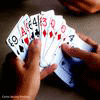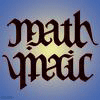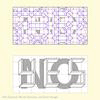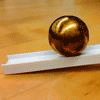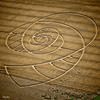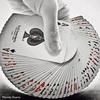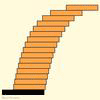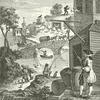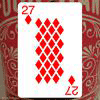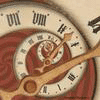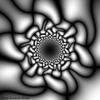Mathematics Awareness Month 2014: Mathematics, Magic, and Mystery
Navigate the Calendar
Magical Braids
Here is a knotty magical challenge presented by MAA Mathematician in Residence James Tanton.
To make a braid one usually starts with three parallel strands joined together at one end but kept loose at the other.
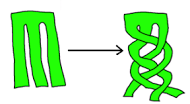
But need we bother with those messy loose ends? Is it possible to make a make a braid with no free ends? Use a piece of felt cut with two slits to give it a try.

The first video shows that these magical braids do exist! The second gives their secret away.
Taking it Further
Why stop at three strands? Can you make this no-free-end version of a four-strand braid? Try it! (Use a piece of felt with three slits.)
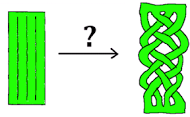
How about a three-braid with an extra strand along for the ride?

The Underlying Mathematics
It is conceptually straightforward to prove that something can be done—just do it! But proving that a task is impossible to do is a trickier matter. Trying many times, and failing, might lead you to suspect a task cannot be completed. But there is always that nagging thought that maybe trying just one more time will do the trick.
Some clever counting actually proves that it is impossible to make the four-strand braid shown. First notice that the strands cross a total of 12 times, sometimes with a right strand crossing over a left (let’s call these positive crossings) and sometimes with a left strand over a right (negative crossings).

In the diagram we have four more positive crossings than negative crossings. Let’s say this braid has index +4
But look at the maneuvers we can perform on this system. For example, we can push the bottom end of the felt through the slit to the left.
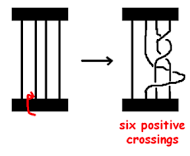
We see that this move introduces six new crossings, all of the same sign. If one is patient, one can list all the possible maneuvers and see that the index of the braid changes either by +6 or -6 or 0. (See the June 2013 Cool Math Newsletter for this.) So starting with an unbraided system, index 0, is it possible to reach a configuration of index +4 using maneuvers that only ever change the index by multiples of six? No! The four-strand braid shown cannot be made.
This braiding problem is connected to a very famous teacup challenge. See again the June 2013 Cool Math Newsletter, and also chapter 12 of Solve This: Math Activities for Students and Clubs (MAA, 2001). Another impossibility proof through counting appears in chapter 3 of Mathematics Galore! The First Five Years of the St. Mark's Institute of Mathematics (MAA, 2012).
Martin Gardner also wrote about magical braids in chapter 2 of his book Sphere Packing, Lewis Carroll, and Reversi (MAA, 2009). He also discusses braids in The Unexpected Hanging and Other Mathematical Diversions (Univ. Chicago, 1969). See chapter 6, “The Church of the Fourth Dimension.”
The mathematical theory of braids is a branch of algebra developed in the mid 20th century.



